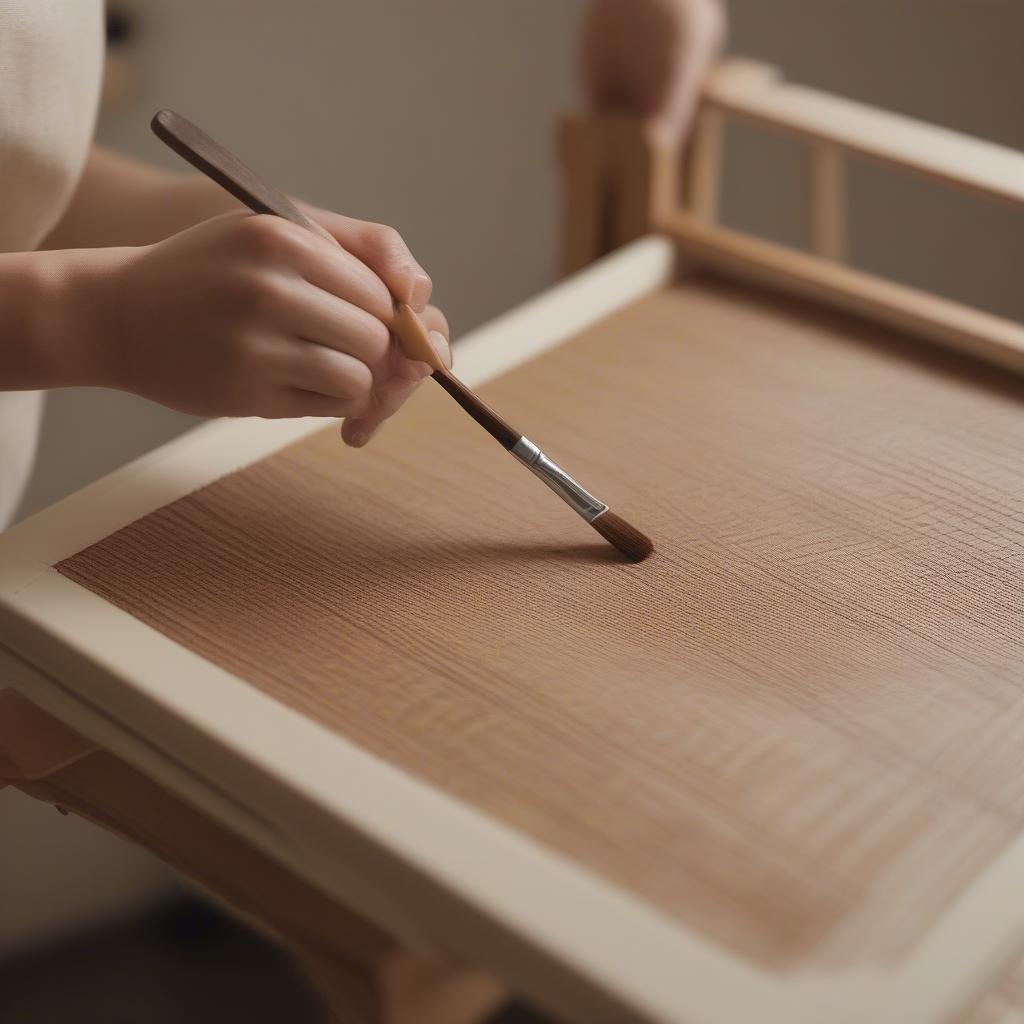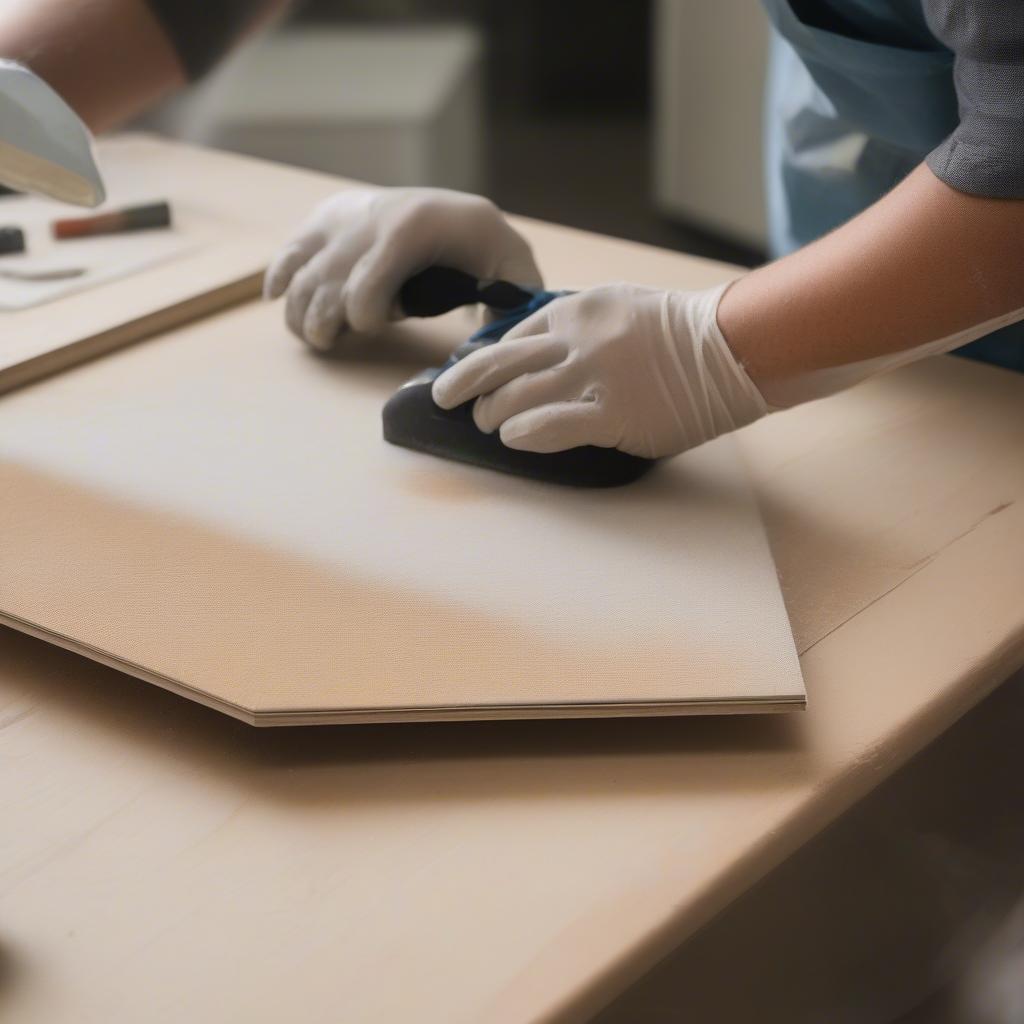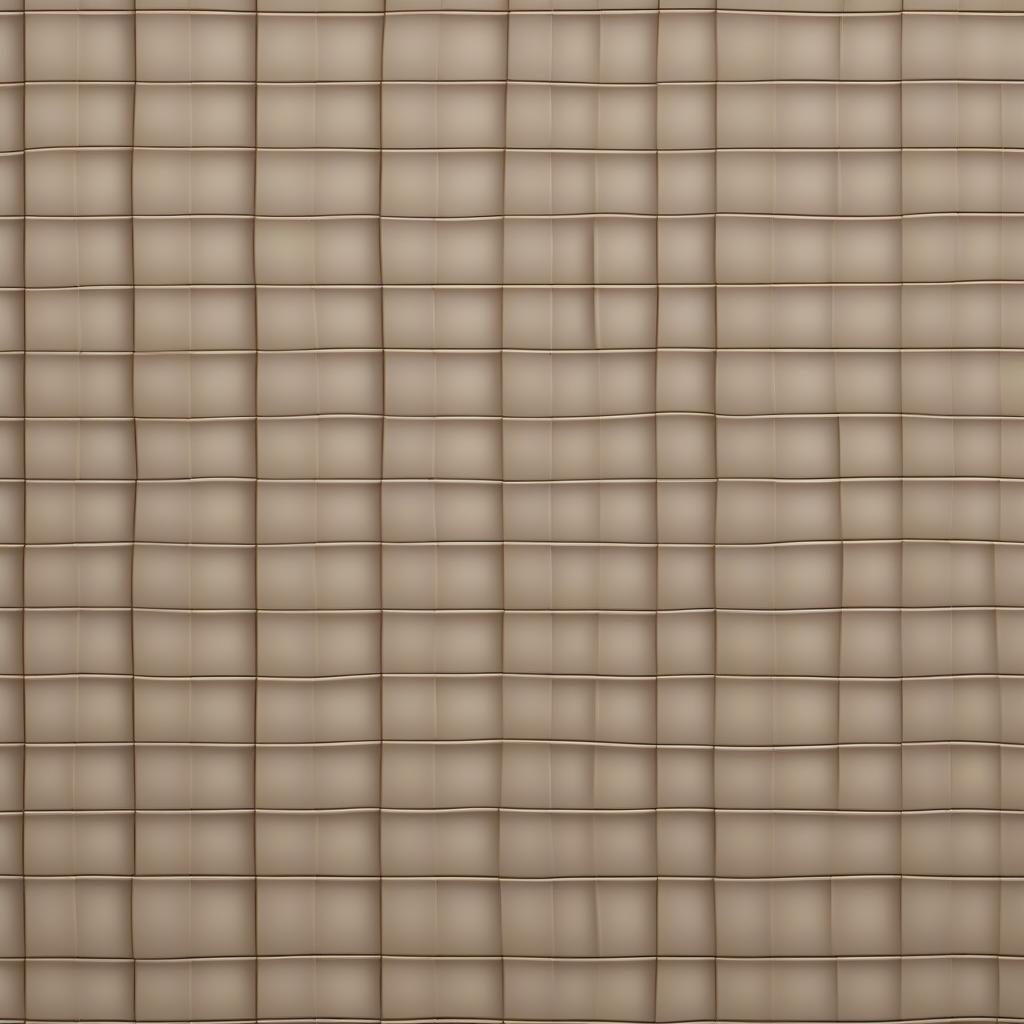Basket Weaving
How to Paint a Basket Weave Pattern
Learning How To Paint A Basket Weave Pattern can transform ordinary surfaces into textured masterpieces. Whether you’re updating furniture, adding detail to walls, or crafting decorative pieces, this technique offers a versatile way to incorporate a touch of rustic charm. This guide will provide a comprehensive overview of how to paint a basket weave pattern, from choosing the right materials to mastering the essential techniques.
Understanding the Basket Weave Effect
The beauty of a basket weave pattern lies in its intricate interplay of vertical and horizontal lines, mimicking the woven structure of a basket. This visual texture adds depth and interest to any surface, making it an ideal choice for both subtle accents and bold statements. Before diving into the painting process, familiarize yourself with the core elements of the pattern.  Painting a basket weave pattern on canvas
Painting a basket weave pattern on canvas
Materials You’ll Need
Having the right tools is crucial for achieving a clean and professional-looking basket weave pattern. Here’s what you’ll need:
- Paint: Choose acrylic or latex paint in your desired color.
- Primer: Use a primer appropriate for your chosen surface.
- Brushes: A variety of brush sizes, including a fine-tipped detail brush, a medium-sized flat brush, and a larger brush for base coats.
- Painter’s Tape: Essential for creating crisp, straight lines.
- Ruler or Measuring Tape: For precise measurements and consistent spacing.
- Drop Cloth or Newspaper: To protect your work surface.
- Pencil: For light sketching of the pattern.
Preparing Your Surface
Proper surface preparation is key to a long-lasting and visually appealing finish. Clean the surface thoroughly, removing any dust, dirt, or grease. If working with a porous material like wood, apply a primer to ensure even paint adhesion.  Preparing a wooden surface for basket weave painting
Preparing a wooden surface for basket weave painting
How to Paint a Basket Weave Pattern: A Step-by-Step Guide
- Base Coat: Apply a solid base coat of your chosen paint color and let it dry completely. This will serve as the background for your basket weave pattern.
- Marking the Grid: Using a pencil and ruler, lightly mark a grid of evenly spaced vertical lines on your surface. The spacing will determine the scale of your basket weave.
- Painting the Vertical Stripes: Using your medium-sized flat brush, paint vertical stripes following the pencil lines. Maintain a consistent width for a uniform look.
- Horizontal Stripes: Once the vertical stripes are dry, apply painter’s tape horizontally across the surface, leaving spaces between the tape strips that match the width of your vertical stripes. This will create the woven effect.
- Painting the “Woven” Sections: Carefully paint the exposed sections between the tape strips, creating the horizontal elements of the basket weave. Use a smaller brush for precision.
- Removing the Tape: Once the paint is almost dry, carefully remove the painter’s tape to reveal the crisp, clean lines of your basket weave pattern.
- Final Touches: Use your fine-tipped detail brush to touch up any imperfections or uneven edges.
 Completed basket weave pattern on a wall
Completed basket weave pattern on a wall
Tips and Tricks for a Perfect Basket Weave
- Practice on a scrap piece of material before tackling your final project. This will help you refine your technique and get a feel for the spacing and brushstrokes. You might consider using a cardboard basket weaving template.
- For a more rustic look, consider using a dry brush technique to create a slightly distressed effect.
- Varying the width of your stripes can add visual interest to your pattern. You may even like the look of a basket weave floor vase.
- For added dimension, consider layering different shades of the same color to create a subtle highlighted effect.
Expert Insights
Jane Doe, a renowned decorative painter, emphasizes the importance of patience when creating a basket weave pattern. “Take your time and focus on precision,” she advises. “Each brushstroke contributes to the overall effect, so ensure consistency throughout the process.” Another expert, John Smith, a master craftsman, suggests experimenting with different color combinations. “Don’t be afraid to play with contrasting hues or create a monochromatic scheme for a more sophisticated look,” he recommends. He also recommends trying decorating with dollar tree basket weave flower pots.
Conclusion
Mastering how to paint a basket weave pattern opens up a world of creative possibilities. With practice and attention to detail, you can transform any surface into a work of art. Whether you’re aiming for a classic, rustic, or modern aesthetic, this versatile technique allows you to personalize your space with a touch of handcrafted charm. Check out how to paint basket weave pattern for more detailed instructions. You may also be interested in a cool paper weaving basket.
FAQ
- What type of paint is best for a basket weave pattern? Acrylic or latex paints work well for most surfaces.
- Do I need to use a primer? Yes, especially on porous surfaces like wood, to ensure proper paint adhesion.
- How do I achieve perfectly straight lines? Use painter’s tape and a ruler for precise measurements.
- Can I use this technique on furniture? Yes, the basket weave pattern can be applied to a variety of surfaces, including furniture.
- How do I clean my brushes? Use soap and water or a brush cleaner specifically designed for your paint type.
- Can I create different variations of the basket weave pattern? Yes, you can experiment with different stripe widths and color combinations.
- What if I make a mistake? You can usually touch up minor errors with a small brush.
For further assistance, please contact us at Hanoi, Vietnam or Tech Avenue, Suite 12, San Francisco, CA 94105, USA. We have a 24/7 customer service team.
